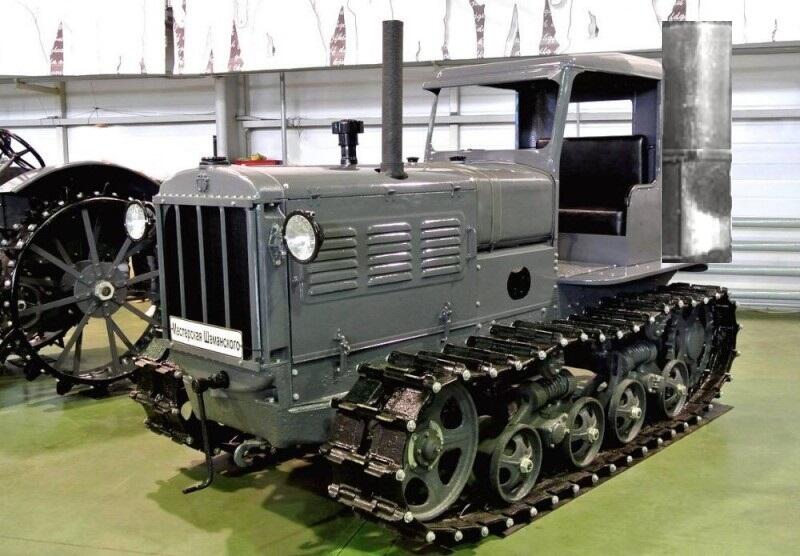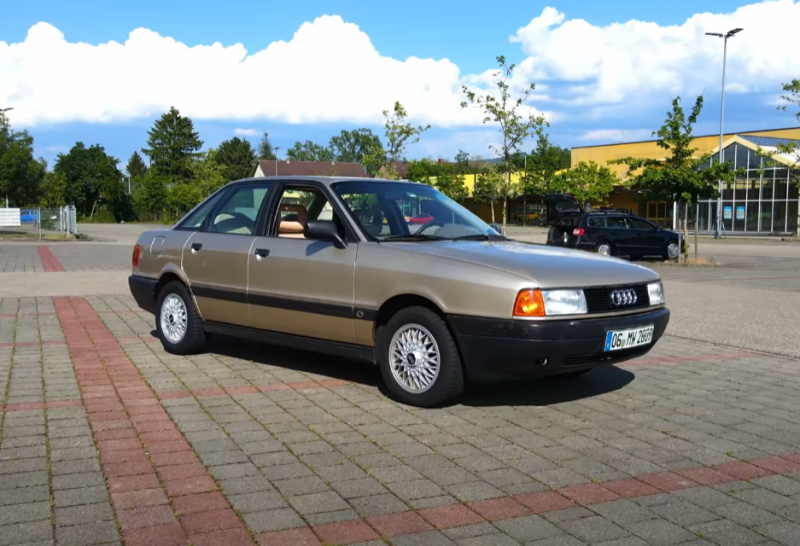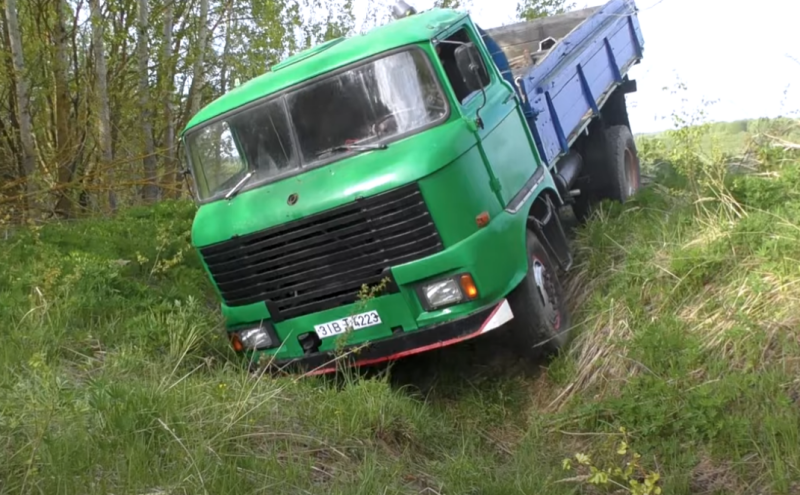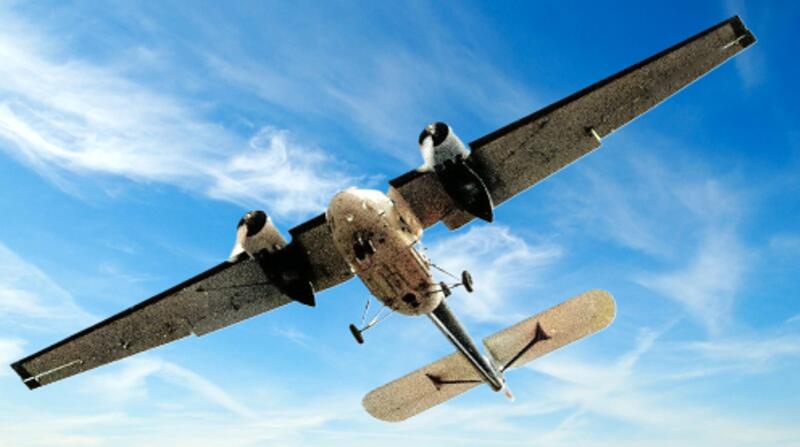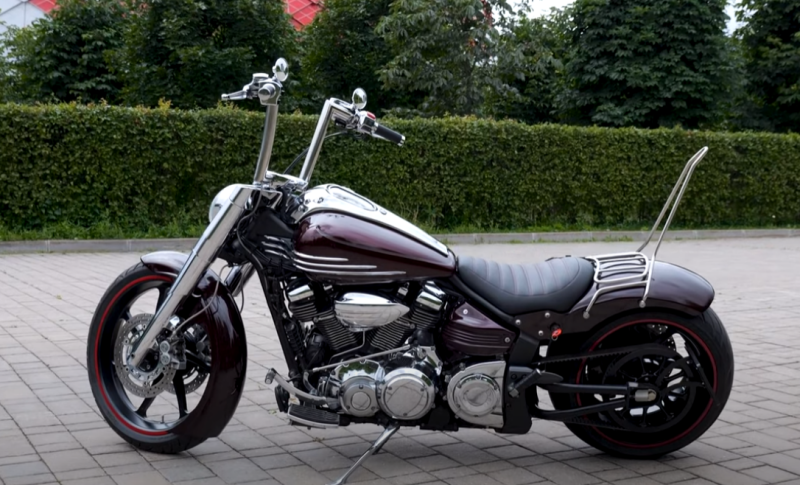The communists rushed to correct the situation. They perfectly understood that agricultural products, along with minerals, are the main source of foreign exchange earnings in the country. And without them, the "industrial revolution" is simply impossible. The data of those years said that our specialists developed several models of tractors on their own in the 30s, making the country one of the European leaders in this indicator. But this is nothing more than, let's face it, exaggerated Soviet propaganda.
 The prototype differed only in the absence of a gas generator. Photo: youtube.com
The prototype differed only in the absence of a gas generator. Photo: youtube.comOf course, in the pre-war decade, several giant tractor factories appeared in the USSR at once: Chelyabinsk, Stalingrad and Kharkov. This radically changed the situation in the country, but it could not have done without the help of more technically advanced America and Germany. Especially, Ford specialists helped, who sympathized with ordinary people and the Soviet state, in particular.
When Soviet engineers had already gained experience from Western colleagues, the opportunity opened up to create their own Scientific Automotive and Tractor Institute (NATI). Its employees were engaged in the design of new models of Soviet equipment for rural workers. And they had to fix several vulnerable points at once. One of them was that the first Soviet tractors, assembled under license, were not only several times more expensive than their counterparts, but also much inferior to them in quality and performance. One of the Ford engineers said so:
“Soviet tractors are too expensive, clumsy and underpowered. Their use as a technique for the village looks unlikely.”
But Soviet people are accustomed not only to create obstacles for themselves, but also to overcome them heroically. The emergence of the above-mentioned factories and the institute contributed to the development of the industry, albeit through trial and error. It was in the community of Stalingraders, Kharkiv residents and employees of the institute that an unusual tractor model appeared, which we will talk about today.
Tractors are needed not only in the countryside
The use of powerful (especially tracked) equipment was not limited to the endless Soviet fields. They were needed by the Red Army as tractors, and in logging. The latter became especially relevant in the late 30s. After all, the Soviet country had one of the world's largest reserves of forestry.
 Both workers and peasants were waiting for the new tractor. Photo: youtube.com
Both workers and peasants were waiting for the new tractor. Photo: youtube.comBut in the distant logging complexes there were almost no communications. Therefore, with the refueling of vehicles in need of constant replenishment of diesel fuel, problems were constantly felt. The issue was resolved very simply.
By that time, the fruit of a joint development of engineers from a specialized institute and Stalingraders already existed. It was assembled at the largest tractor plant in the country, located in the city named after the leader and had the name SHTZ-NATI. Later, its release was mastered in Kharkov. Based on its base, Kharkiv residents offered promising equipment for forestries.
From 1938 until the very beginning of the war, the KhTZ-T2G gas generator model was assembled here. The tractor could run on many types of conventional solid fuels, which made it very attractive for locations far from gas stations. Or where the supply of fuel is very difficult, i.e., in logging offices and farms.
These types of engines were then just coming into vogue and proved to be especially valuable during the war. They worked according to the following principle:
✅ loaded rotting biomass
✅ combustible gas was obtained from it
✅ The internal combustion engine used it as fuel.
There was another reason for the pride of Soviet engineers of those years in this vehicle. After all, he, like SHTZ-NATI, was a full-fledged Soviet development. Without borrowing and attempts to imitate. All the models of Soviet agricultural technology that existed before, despite the loud statements of responsible comrades, could not do without foreign licenses or attempts at outright plagiarism.
 Severe appearance, corresponding to the scope of use. Photo: youtube.com
Severe appearance, corresponding to the scope of use. Photo: youtube.comOf course, the use of an alternative fuel source (apart from economy and practicality) had certain negative consequences. The main thing can be considered difficult starting the motor. Firstly, this required a small amount of gasoline, and secondly, the “explosive mixture” could not compete with high-quality fuel. Engine power has dropped four "horses" compared to the original model.
Technical features of the gas generator model
To the already mentioned, we can add that the autonomous period of the engine was no more than three hours. After that, a new portion of firewood was required, which the gas generator happily consumed at least 43 kg in one hour of active engine operation. Other parameters were as follows:
✅ engine capacity - 7,46 liters
✅ power - 48 liters. With
✅ weight with fuel - 5,85 tons
✅ number of gears - 4 (forward) and 1 (back)
As a power unit, they first wanted to use their own design, developed by KhTZ engineers. But the motor failed its creators during the tests, showing low efficiency and many weaknesses. Time was running out, because an order had already been received from above to ensure the start of production of tracked vehicles on a gas generator as soon as possible. Let me remind you that it was in 1937 ... Therefore, they quickly intercepted a good G-19 unit, designed at NATI, from colleagues. It was he who became the regular engine of the new tractor.
In the first KhTZ-T2G models, there was no protective cover and spark arresters. This significantly increased the potential fire hazard of the vehicle. It is for this reason that there could be no question of using it in rural fields. But the country was sorely lacking in various types of equipment. Therefore, the one that was produced simply had to have the maximum versatility of use. After eliminating fire hazards, the Kharkov tractor was able to take part in the harvest campaign.
So the gas-generating tractor became a full-fledged general-purpose transport. Although, nevertheless, his main place of work is the logging artels of the Far North. Delivery of diesel fuel there was not only difficult, but also economically unprofitable. There, the new transport turned out to be very useful and was widely used.
 Post-war "Stalinets-80" and HTZ-T2G. Photo: youtube.com
Post-war "Stalinets-80" and HTZ-T2G. Photo: youtube.comBut in the countryside, kindling from matches could lead to tragedy. Therefore, an electric fuse was added to the design of the tractor, which, along with spark arresters and protective covers, made it safe for a ripe crop. The design of the KhTZ-T2G was constantly refined and improved in order to achieve maximum efficiency from it.
Hard work in wartime
Most likely, KhTZ-T2G would eventually get a more economical engine and overgrown with many modifications. But the existing plans were violated in 1941. All tractor factories urgently switched to the production of another kind of products. And KhTZ soon went into evacuation. But in a little over three years, they managed to assemble about 16 thousand tractors with a gas generator engine.
 Now they can only be seen as a layout. Photo: youtube.com
Now they can only be seen as a layout. Photo: youtube.comIn the first half of the forties, these tractors saved a large amount of diesel fuel for the country and performed various types of work. But after the war, a new round in the development of tractor construction began and other models appeared. The G-19 itself served as the basis for the creation of the KT-12 - a gas generator for the skidder.
